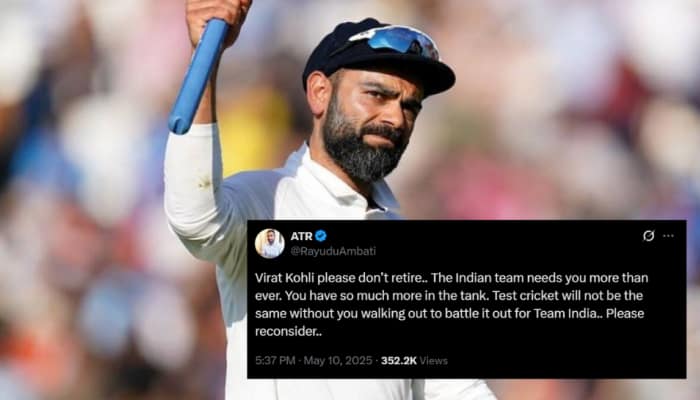In a stunning turn of events that could redefine the future of Indian Test cricket, Virat Kohli has reportedly informed the BCCI of his intention to retire from red-ball cricket. This development comes just weeks before India’s highly anticipated tour of England. As per sources close to the board, the 36-year-old icon made his decision privately, but senior officials are believed to be urging him to stay on.
This shockwave follows closely on the heels of Rohit Sharma’s confirmed retirement from Test cricket, signaling a possible end to an era dominated by two of India’s most accomplished red-ball players. With both Kohli and Rohit potentially stepping aside, the Indian Test team faces a massive leadership void and a major transition period.
Amid the speculation and lack of an official statement from Kohli himself, former cricketer and commentator Ambati Rayudu took to social media, passionately appealing to Kohli to continue his Test journey.
“Virat Kohli, please don’t retire… The Indian team needs you more than ever. You have so much more in the tank. Test cricket will not be the same without you walking out to battle it out for Team India… Please reconsider…”
Virat Kohli please don’t retire.. The Indian team needs you more than ever. You have so much more in the tank. Test cricket will not be the same without you walking out to battle it out for Team India.. Please reconsider..
— ATR (@RayuduAmbati)
Kohli’s Test Legacy
Virat Kohli’s contribution to Test cricket has been nothing short of monumental. In 123 matches, he has amassed 9,230 runs, including 30 centuries. His leadership transformed India’s approach to the longest format, instilling aggression, prioritizing fitness, and backing a potent fast-bowling unit.
From his heroic century in Adelaide in 2014 to his commanding performances at Lord’s in 2018, Kohli redefined India’s presence in overseas conditions, especially in the SENA (South Africa, England, New Zealand, Australia) countries.
If Kohli does indeed walk away from Tests, India’s lineup for the England tour will look radically different, and potentially vulnerable. With two modern-day greats gone, Indian cricket now faces one of its most pivotal transition phases in recent memory.








